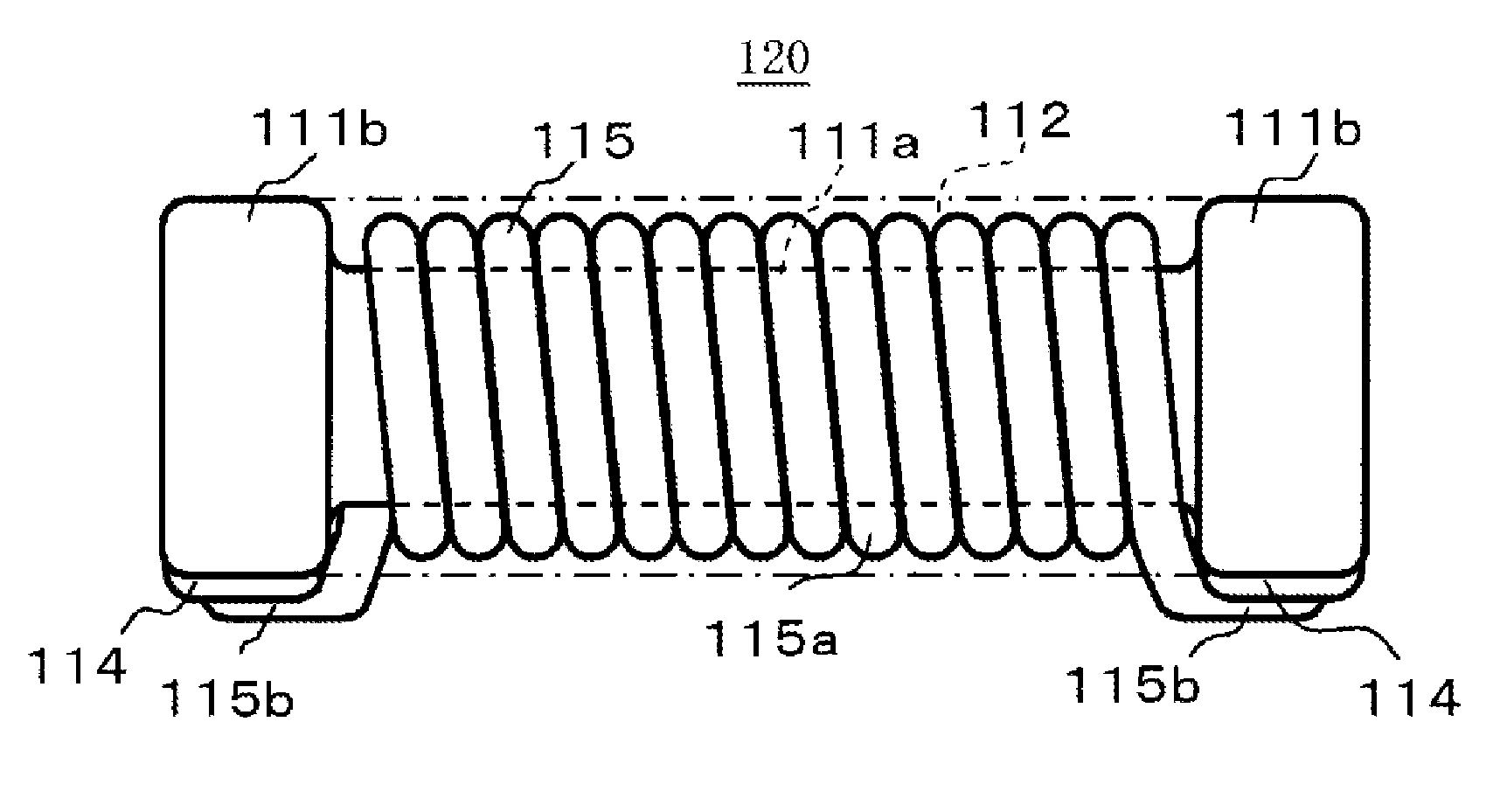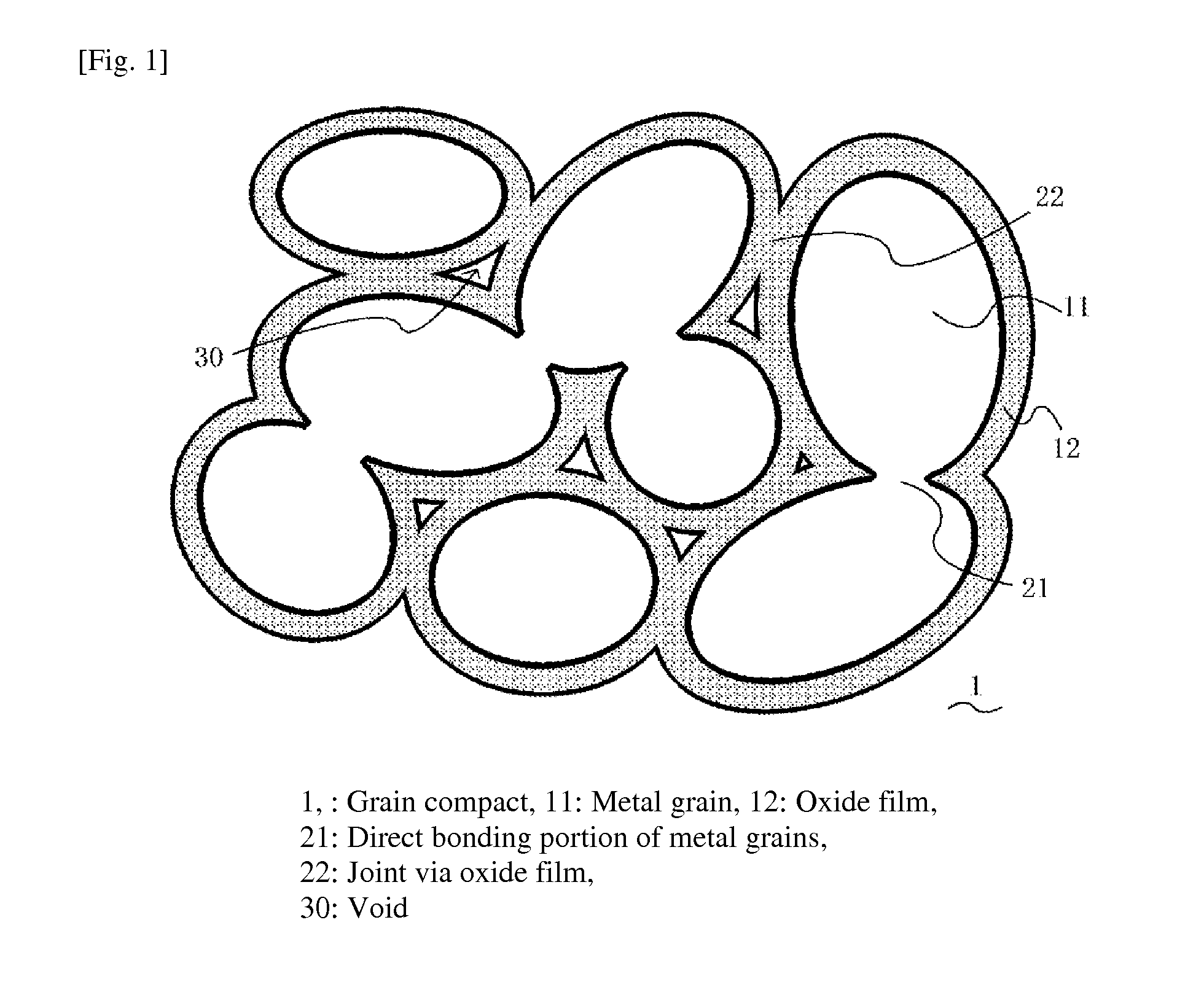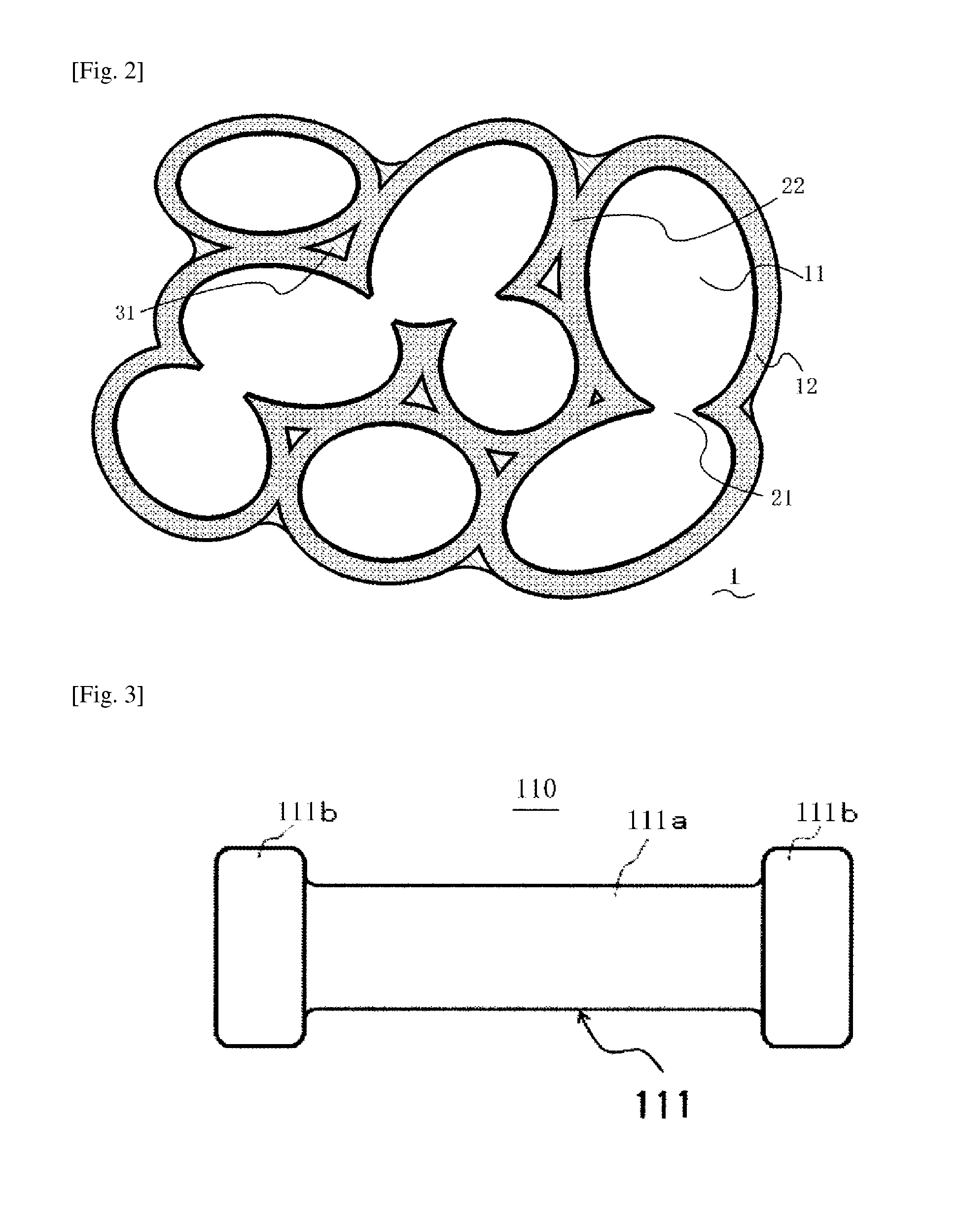Magnetic material and coil component using the same
- Summary
- Abstract
- Description
- Claims
- Application Information
AI Technical Summary
Benefits of technology
Problems solved by technology
Method used
Image
Examples
example 1
Material Grains
[0079]Commercial alloy powder manufactured by the atomization method, having a composition of Cr 4.5 percent by weight, Si 3.5 percent by weight and Fe accounting for the remainder, and an average grain size d50 of 10 was used as material grains. When the surface of an aggregate made of this alloy powder was analyzed by XPS and FeMetal / (FeMetal+FeOxide) mentioned above was calculated, the result was 0.25.
(Manufacturing of Grain-Compacted Body)
[0080]One hundred parts by weight of these material grains were mixed and agitated with 1.5 parts by weight of an acrylic binder whose thermal decomposition temperature was 400° C., to which 0.5 part by weight of Zn stearate was added as a lubricant. Thereafter, the mixture was formed to a specific shape at 8 t / cm2, and heat-treated for 1 hour at 750° C. in an oxidizing atmosphere where the oxygen concentration was 20.6%, to obtain a grain-compacted body. When the characteristics of the obtained grain-compacted body were measured...
example 2
Material Grains
[0082]Commercial alloy powder manufactured by the atomization method, having a composition of Al 5.0 percent by weight, Si 3.0 percent by weight and Fe accounting for the remainder, and an average grain size d50 of 10 was used as material grains. When the surface of an aggregate made of this alloy powder was analyzed by XPS and FeMetal / (FeMetal+FeOxide) mentioned above was calculated, the result was 0.21.
(Manufacturing of Grain-Compacted Body)
[0083]One hundred parts by weight of these material grains were mixed and agitated with 1.5 parts by weight of an acrylic binder whose thermal decomposition temperature was 400° C., to which 0.5 part by weight of Zn stearate was added as a lubricant. Thereafter, the mixture was formed to a specific shape at 8 t / cm2, and heat-treated for 1 hour at 750° C. in an oxidizing atmosphere where the oxygen concentration was 20.6%, to obtain a grain-compacted body. When the characteristics of the obtained grain-compacted body were measured...
example 3
Material Grains
[0084]Commercial alloy powder manufactured by the atomization method, having a composition of Cr 4.5 percent by weight, Si 6.5 percent by weight and Fe accounting for the remainder, and an average grain size d50 of 6 was used as material grains. When the surface of an aggregate made of this alloy powder was analyzed by XPS and FeMetal / (FeMetal+FeOxide) mentioned above was calculated, the result was 0.22.
(Manufacturing of Grain-Compacted Body)
[0085]One hundred parts by weight of these material grains were mixed and agitated with 1.5 parts by weight of an acrylic binder whose thermal decomposition temperature was 400° C., to which 0.5 part by weight of Zn stearate was added as a lubricant. Thereafter, the mixture was formed to a specific shape at 8 t / cm2, and heat-treated for 1 hour at 750° C. in an oxidizing atmosphere where the oxygen concentration was 20.6%, to obtain a grain-compacted body. When the characteristics of the obtained grain-compacted body were measured,...
PUM
| Property | Measurement | Unit |
|---|---|---|
| Soft magnetism | aaaaa | aaaaa |
| Magnetism | aaaaa | aaaaa |
Abstract
Description
Claims
Application Information
 Login to View More
Login to View More - R&D
- Intellectual Property
- Life Sciences
- Materials
- Tech Scout
- Unparalleled Data Quality
- Higher Quality Content
- 60% Fewer Hallucinations
Browse by: Latest US Patents, China's latest patents, Technical Efficacy Thesaurus, Application Domain, Technology Topic, Popular Technical Reports.
© 2025 PatSnap. All rights reserved.Legal|Privacy policy|Modern Slavery Act Transparency Statement|Sitemap|About US| Contact US: help@patsnap.com



